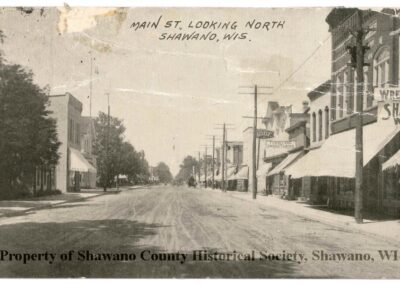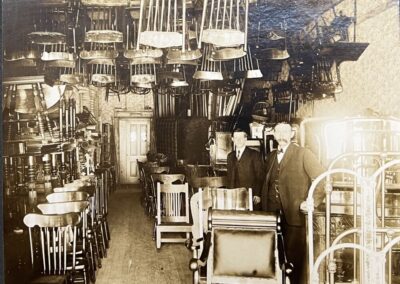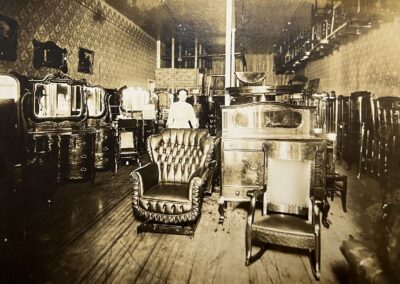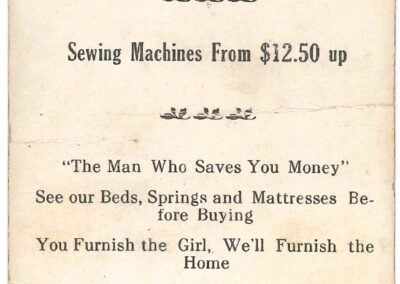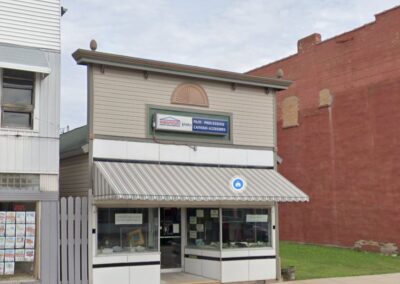Location
Photo Gallery
A Brief History
Karth Furniture & Undertaking
208 S. Main St.
Shawano, Wiscoinsin
Furniture and undertaking may at first seem like an odd combination. However, many early furniture makers also built coffins as part of their work. These enterprising businessmen realized that in addition to caskets they could provide funeral services and care to the families of the deceased. They would often expand their businesses to include undertaking by earning an embalming license.
The Karth Furniture & Undertaking business was estabished in Shawano in 1909 by Martin Karth. Located at 208 S. Main Street in Shawano, the funeral business increased as the population of Shawano grew. Karth discontinued his furniture business in 1924 and built a larger brick building at 336 S. Sawyer Street. Mr. Karth operated the funeral home for 56 years and later was joined by his sons Walter and Karl Karth. Over the course of many years the funeral home was updated and improved. In 1976 the funeral home was purchased by Ron Kopitzke who retired in 1985, selling his interests to Russ Schroeder. In 1992 the funeral home was completely remodeled. In 1998, Rob Mickelson joined the firm, and in 2012 Rob and his wife, Nancy, purchased the business from Russ and Teri Schroeder and still own it today.
From the 1999 National Register of Historic Places Registration application:
Although this building at 208 S. Main Street has been substantially altered, most of the alterations to the primary facade date from the building’s conversion from a newspaper office to a jewelry store in 1945 and are themselves historically significant. This one-story front gabled frame building with Boomtown facade features a rare historic porcelainized enamel storefront consisting of panels of white, slightly textured, semi-reflective enamel-coated steel panels on high storefront bulkheads and on the transom area above the windows. The bulkhead segments are interrupted at about nine inches below the lower edge of the storefront windows on each side of the central entry by a single horizontal band of black porcelainized enamel about six inches in width, which extends across the width of the facade on either side of the entry. All of the panels are set in thin aluminum frames.
The doorway is recessed, with the panels and storefront windows extending from the sidewalk to the door set at a slight angle. The display windows are set in thin aluminum frames, and appear to be original to the building. The door itself is non-historic but unobtrusive, and consists of an aluminum frame with single plate glass window. An apparently historic, narrow, flat fixed awning with Streamlined-style horizontal “speed lines” extends across the facade about one foot above the upper frames of the storefront windows; a non-historic shed-style fixed metal awning is suspended immediately beneath the older awning. The porcelainized enamel panels above the awning are bisected by a black horizontal band similar to that on the bulkheads, and the entire applied storefront is framed with wide aluminum members.
The area of the facade above the applied storefront and extending to within approximately two feet of the cornice is covered by an applied signboard, on which the word “Jewelry” can be faintly seen. Above this sign board some of the building’s original wood siding is visible; the facade is surmounted by a simple molded wood cornice supported by four small, singly-spaced brackets. The exposed south-facing facade of the building, which is visible but unobtrusive to the streetscape, is sided with imitation brick siding and has no other visible features. The primary facade of this buildings has a high level of integrity.

